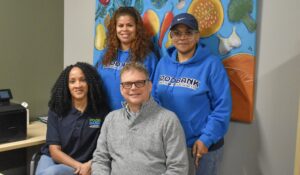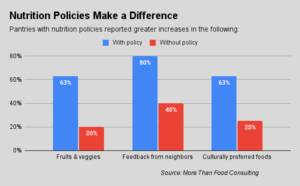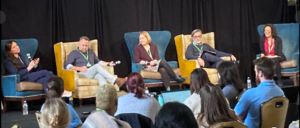Two things about Food is Medicine became apparent at the Anti Hunger Policy Conference in D.C. earlier this month – 1) it takes a lot of time-consuming trial and error to stand up a Food is Medicine initiative and 2) the time to get started in Food is Medicine is asap.
Medicaid’s 1115 waivers hold the possibility of bringing systemic change to the charitable food system by making massive amounts of government funds available to help nonprofits distribute nutritious food to vulnerable populations (see more here). “The healthfulness of food is finally being prioritized and it will finally be paid for in part by the government,” said Alyson Rosenthal, Chief Program Officer at NYC-based West Side Campaign Against Hunger.
The tricky part is that Food is Medicine requires nonprofits to team up with the healthcare system, a long journey of forging relationships, deploying new technology and building trust. In the meantime, for-profit companies with an eye on those same government funds are also making new relationships in healthcare, while innovating ways of getting nutritious food to people.
It’s a mix of complexity and urgency that had speakers at the conference urging nonprofits to just get going already. “Pick something and get started,” said R.J. Briscione, Healthcare Strategist at Health Management Associates. “It’s going to feel incredibly daunting to get something off the ground. But do it anyway – pick something and start.”
Echoing speakers at last month’s Food is Medicine Summit in Chicago (see more here), Briscione noted that community-based organizations have an advantage over for-profit companies seeking to gain a foothold in Food is Medicine. “You’re already doing the work and you do it better than anybody,” he said, adding, “We really want you as people who are on the ground doing the real work to be able to engage Medicaid.”
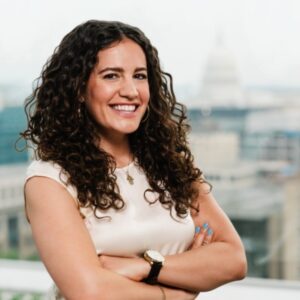
Speakers at the conference underscored the diversity of pathways into Food is Medicine for nonprofits. Food Bank of Central and Eastern North Carolina is working with state healthcare managers to get healthy food to patients, mostly via home-delivered boxes of shelf-stable nutritious food (see more here). DC Greens is running a produce prescription program. And West Side Campaign Against Hunger is working with an NYC hospital to let patients order healthy food boxes through a digital platform and receive home delivery.
“There are a million different opportunities that exist out there,” said Gideon Adams, Vice President of Community Health and Engagement at Food Bank of Central and Eastern North Carolina. In fact, the field is wide open, giving nonprofits a certain amount of influence when working with healthcare payers and providers. “Just know that you have some power because they are floundering as much as we are with regards to a solution,” Adams said.
The speakers also illustrated the need to take a long view on Food is Medicine. DC Greens has been working on and revising a Food is Medicine produce prescription program for at least a decade. It started in 2012 with paper vouchers that could be used at farmer’s markets, then expanded the program to a local grocery store. Even so, only 40% of the dollars it was distributing were being spent. “We knew if our program was underutilized, we couldn’t make a case to Medicaid and say, ‘Hey, this is a great program, you should embed it,’” said Luisa Furstenberg-Beckman, Manager of the Produce Prescription Program at DC Greens.
DC Greens then transitioned the program to a debit card-based solution from Boston-based About Fresh (see more here) that lets people make purchases at hundreds of area grocery stores, as well as farmer’s markets. Now, 75% to 80% of the dollars it distributes are being spent every month. “We have a better case, and our program is scalable and replicable,” Furstenberg-Beckman said.
West Side Campaign Against Hunger has also morphed its program over time. Since 2019, it has been working with New York Presbyterian Hospital on a food pharmacy program that this year is expected to distribute 1.5 million pounds of food to more than 3,000 patients. The nonprofit’s decision to provide only a modified level of choice in the food boxes it delivers has allowed it to scale the program significantly, Rosenthal said.
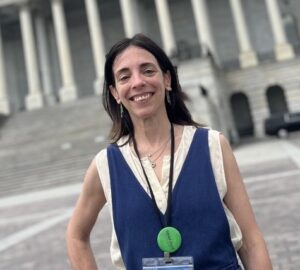
Patients can choose to have either all fresh produce or a mix of canned and fresh items. They can also choose to have either plant-based proteins or a mix of animal- and plant-based. While the goal is to increase the level of choice over time, West Side Campaign Against Hunger doesn’t anticipate ever providing item-by-item choice. “We’re finding that sweet spot in terms of ease of use for our customers, and ease for our operations,” said Rosenthal, noting that each additional choice adds complexity on the back-end in terms of fulfillment.
The nonprofit has also iterated the way it does home deliveries, after having worked with multiple providers, including DoorDash. Currently it’s contracted with a private service called Hungry, which guarantees home deliveries using a regular set of drivers who provide a consistent level of customer service, Rosenthal said.
Food Bank of Central and Eastern North Carolina got into Food is Medicine by engaging some of its partner agencies to help it handle the door-to-door distribution of shelf-stable healthy food boxes, currently to about 500 patients. Under its three-year plan, the food bank expects to be serving 14,000 patients and earning $2 million a month via reimbursements from state Medicaid insurers (see more here).
Collaboration, including learning the language that comes with working with clinicians, is key, said Adams of the Food Bank of Central and Eastern North Carolina. “It is a huge, huge learning curve,” he said, adding, “There is a reason that medical billing is a job.” Collaboration has to occur not just between nonprofits, but also across sectors. “We are going to have to get over the barriers we have sometimes put up in terms of working with for-profit organizations and the private sector,” Adams said.
In Adams’ view, Medicaid in general is moving in the direction of reimbursing for healthy food, and may begin adding the provision on a national basis even before demonstration projects get up and running in some states. “So the real message is prepare yourselves now,” he said. “Make a plan that is simple. There is huge money out there and it gives everybody an opportunity to assist.” – Chris Costanzo
CAPTION FOR PHOTO, TOP: Gideon Adams of Food Bank of Central and Eastern North Carolina (right) and R.J. Briscione of Health Management Associates (left) answer questions from attendees at the Anti-Hunger Policy Conference earlier this month. Photo credit to Henry Crews of Green Rural Redevelopment Organization.
Like what you’re reading?
Support Food Bank News

